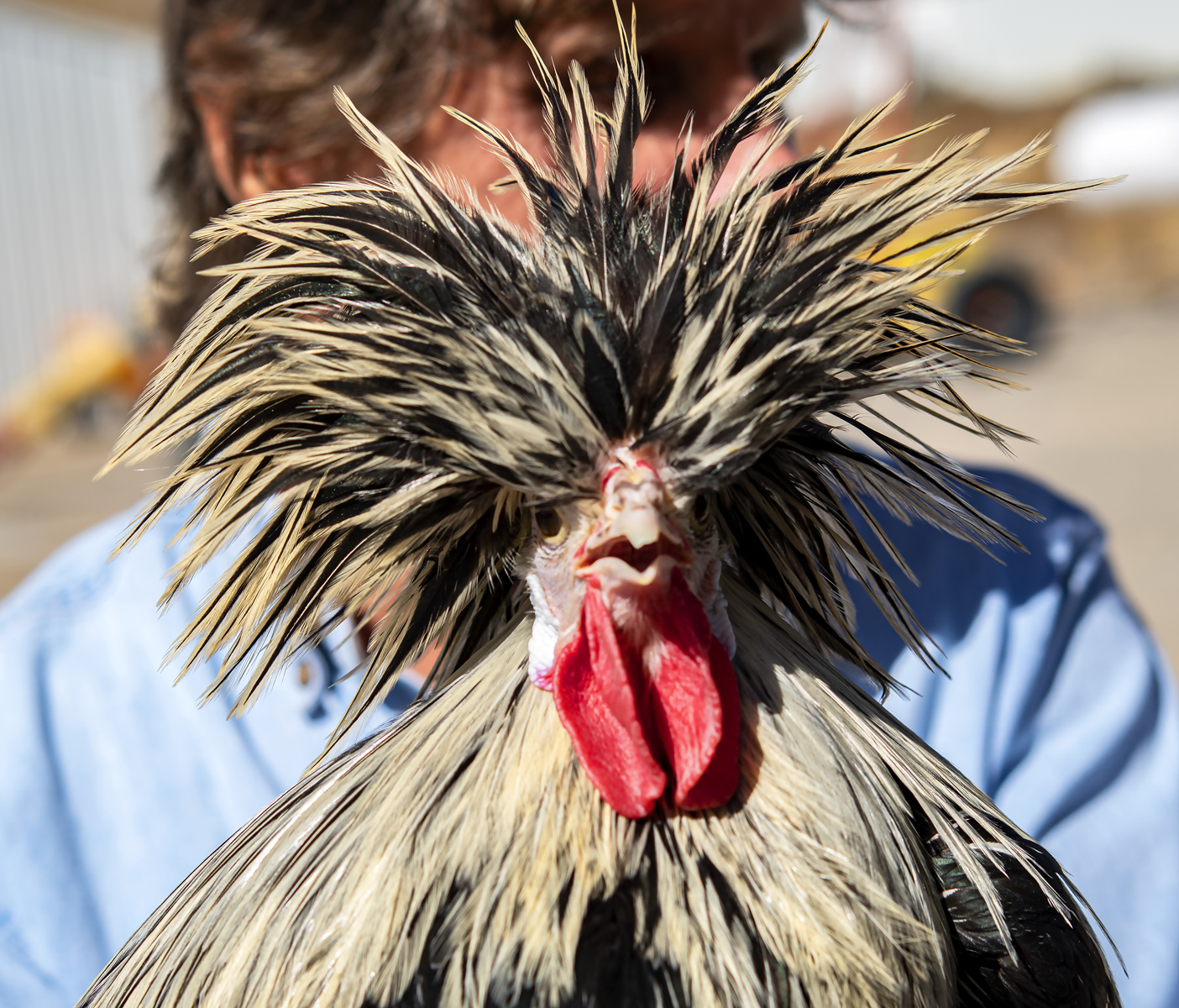
5 minute read
The Whiting Story
There is probably no fly tyer in the world unfamiliar with Whiting Farms and at least a few of its products. For those who tie dry flies, hackle from one of their genetically bred roosters is essential—and has been for over 35 years. Dr. Tom Whiting has been in the business of developing feathers for fly tying for that long, but his interest in poultry stretches back even further.
BY THE EDITORIAL STAFF

Tom Whiting grew up in Denver, Colorado, and displayed a passionate interest in chickens and birds from a young age. When his family moved to the Denver suburbs, Tom took the opportunity to raise chickens and began his entrepreneurial journey as an egg supplier for his neighbors. This early venture gave him valuable insight into breeding and crossbreeding different chicken varieties to achieve desired traits. Over the years, Tom attended several universities, earning multiple degrees in poultry breeding and genetics. He also gained practical experience working in the poultry industry, from egg production to broader poultry management.

The fact that he became world-famous for feathers used in fly tying was a product of both passion and serendipity. Henry Hoffman, a pioneer in producing feathers for fly tying, was preparing to close his business. Hoffman, who started his work in Oregon in the mid-1960s, was among the first to breed birds specifically for high-quality dry fly feathers. His own experiences as a commercial fly tyer underscored the challenges of sourcing suitable feathers, particularly the black-and-whitestriped grizzly hackles. After significant research, Hoffman discovered a group of Plymouth Rock chickens and began selectively breeding them. His efforts yielded feathers of unprecedented quality and consistency, sufficient not only for his needs but also to supply other fly tyers.

Grizzly Hackles for the Win
For the first 15 years of Hoffman’s business, only grizzly hackles were produced. At its peak, the operation raised around 2,200 birds per year. By the early 1980s, Hoffman sought to retire and sell the business. Finding the right successor, however, proved challenging.
After about five years, he met Tom Whiting, and the two agreed on a transition plan. Hoffman’s operation, which had since expanded to include white and brown hackles, was relocated to western Colorado. Hoffman remained involved as a consultant during the early years of the transition.
In 1989, the first chicks hatched at the new facility in Delta, Colorado. The company name was officially changed from Hoffman Hackle to Whiting Farms. Production grew rapidly, expanding from 5,000 birds in its first year to the robust operation it is today. Simultaneously, efforts to develop new products began.


Hebert Miner and Beyond
In 1995, Whiting Farms introduced the Hebert/ Miner line, a secondary dry fly product line renowned for its extensive variety of natural colors. Over the years, Whiting Farms has continued innovating, either by developing new breeds or enhancing existing ones. One significant achievement was the introduction of Coq de Leon birds from Spain, one of the oldest chicken breeds used in fly tying.
Whiting Farms remains the only producer of these birds outside Europe. In the mid-1990s, they also launched the Whiting American line, tailored for wet flies and streamers, and in 1997, the Whiting Spey line, which aimed to provide an alternative to traditional salmon fly materials like heron hackles.


Brahma and Modern Expansion
The Brahma line was later developed as a substitute for game birds like partridge and grouse. Since 2015, Whiting Farms has operated out of a modernized facility that replaced an older farm. The facility includes barns for breeding groups of various lines, both for poultry production and for egg and chicken suppliers. Eggs from the breeding birds are carefully collected and labeled twice daily, then transferred to a hatchery. The eggs are stored in a cool environment for about a week until there are enough to begin incubation. Four incubators, each capable of holding up to 18,700 eggs, maintain precise temperature and humidity conditions for over 18 days. The eggs are then moved to hatching machines, where the chicks emerge over several days.

Raising and Processing Chickens
Once hatched, the chicks are sexed and sorted into roosters and hens.
They are initially housed in a specially designed facility with heat lamps, and as they grow, their living spaces are expanded. After a few weeks, the birds are relocated to individual cages in another barn, where they mature over 9–11 months. The final production of necks and saddles takes place at a separate facility nearby. There, the birds are humanely processed, and highly skilled staff ensure every part is utilized. The skins are cleaned, dried, dyed (if needed), and meticulously graded before being packed for shipment to distributors and customers around the globe.














